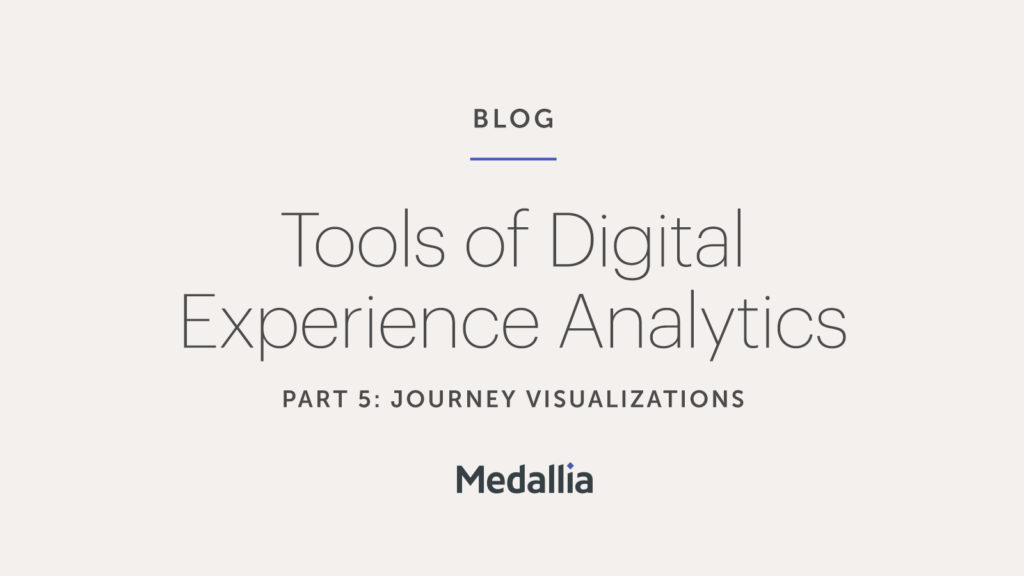In the last decade alone, the field of customer experience (CX) management has undergone a revolutionary transformation. The integration of digital technologies in every aspect of business has changed how companies operate and fundamentally altered the way they interact with their customers. Recognizing and adapting to these shifts is vital for any organization that wants to keep up in the rapidly evolving landscape. In this article, we’ll unpack how digital transformation within customer experience is redefining the business landscape and offer actionable insights and strategies for embracing digital innovation and transformation within your CX practice.
How Digital Transformation Is Driving Customer Experience
The digital era has ushered in a period of unprecedented change in the world of customer experience management. And, in many ways, it has redefined it. At the heart of this transformation is the seamless integration of digital technologies into customer interactions. The digital landscape has created a fundamental shift in business philosophy and strategy.
The evolution began with the digitization of basic customer interactions. Simple processes, such as online ordering and electronic customer support, represent the early stages of this transformation. As technology has advanced, so has the complexity and effectiveness of these digital interactions. Today, we see a complete digitization of the customer journey, from initial engagement to post-purchase support.
The journey from traditional customer interactions to digitizing customer experiences has been nothing short of remarkable, with businesses shifting from a product-centric to a customer-centric approach, where the customer experience is at the forefront of every decision.
6 Key Technologies and Trends Fueling Digital Transformation of the Customer Experience
1. Personalization
With the advent of AI-powered analytics like Text Analytics and Speech Analytics, businesses have the potential to understand their customers like never before. Companies can analyze vast amounts of data to gain insights into customer preferences, behavior, and expectations. This level of understanding enables businesses to tailor their services and products to meet the specific needs of individual customers, delivering a personalized experience that was once thought impossible.
2. Omnichannel Engagement
Another aspect where digital transformation is driving customer experience is through omnichannel customer engagement. Thanks to the growth in digital channels, today’s customers interact with brands across multiple touchpoints, including social media, mobile apps, and websites. Digital transformation enables (and requires) businesses to provide a cohesive and seamless experience across all these channels. By capturing customer signals across channels and touchpoints and using tools like customer experience orchestration, digital experience analytics, and Text and Speech Analytics, brands can ensure customers receive consistent messaging and experiences, regardless of how and where they’re engaging with companies.
3. Real-Time Feedback
Furthermore, digital transformation has made customer feedback more accessible and actionable. With real-time analytics and customer feedback platforms, businesses can now gather, analyze, and act upon customer opinions quickly and efficiently. This immediate insight allows companies to make swift adjustments to their services, enhancing customer satisfaction and loyalty.
4. Mobile and Social Media Channels and Technologies
Social media, smartphones, and mobile technology have played pivotal roles in digitizing customer experience. In-app and SMS messaging as well as social media channels and online review platforms have become vital channels for customer engagement. Through these digital channels and touchpoints, businesses can advertise their products and services as well as interact with customers in real-time, providing support and gathering feedback.
5. AI and Machine Learning
In more recent years, the rise of AI and machine learning has taken digitization to the next level. Savvy brands are using AI in the customer experience to get to know customers better, provide faster resolutions, speed up analysis, and personalize the experience. Chatbots and virtual assistants, powered by AI, are now common on websites and apps, providing instant support to customers. These technologies have also enabled businesses to automate many aspects of the customer journey, from personalized product recommendations to predictive customer service.
6. Automations, Self-Service Solutions, and Chatbots
Brands are embracing digital transformation of the customer experience across customer support channels and the contact center. Automation in customer service comes in many forms, from automated email responses to smart callback solutions to more complex systems like AI-powered chatbots and using AI-powered Text and Speech Analytics to analyze and draw insights from 100% of customer interactions. AI-powered solutions can handle a wide range of customer queries, assist with transactions and troubleshooting issues, and can provide instant analyses and guide next best actions, freeing up human customer service representatives to deal with more complex issues. They can engage with customers in real-time, providing immediate assistance and support. What makes these chatbots particularly effective is their ability to learn from interactions and improve over time, offering increasingly personalized and accurate responses. This not only improves efficiency but also enhances customer satisfaction, as customers get their issues resolved quickly.
Self-service solutions are another significant aspect of digital transformation in customer service. These include interactive FAQs, online knowledge bases, and customer portals where customers can manage their accounts and resolve issues without needing to contact a customer service representative. By empowering customers to find solutions on their own, businesses can improve customer satisfaction while reducing the workload on their customer service teams.
Benefits and Advantages of Digital Transformation of the Customer Experience
1. Enhanced Personalization and Customer Engagement
One of the most significant benefits of digital transformation in the realm of customer experience is the enhanced level of personalization and engagement it facilitates. Digital-transformation-driven customer experience strategies allow businesses to understand their customers on a much deeper level. This understanding leads to meaningful interactions, fostering a deep connection between the customer and the brand.
Enhanced personalization based on behavior not only improves the customer experience but also strengthens customer loyalty. Customers are more likely to return to a brand that understands their needs and provides relevant, personalized experiences. Medallia researchers have found that most consumers (61%) are willing to spend more with a company if they can offer a customized experience and even more (82%) say personalized experiences influence the brand they choose at least half of the time when shopping.
2. Seamless Omnichannel Experiences
Digital transformation has made it possible for businesses to provide a seamless omnichannel experience, ensuring consistency across various customer touchpoints. Whether a customer is interacting with a brand through a mobile app, website, social media, or in a physical store, digital transformation enables brands to deliver a cohesive and integrated experience.
This seamless experience is crucial in today’s interconnected world, where customers expect to switch between different channels smoothly.
The key to providing a seamless omnichannel experience lies in the effective integration of digital technologies. This includes ensuring that all channels are connected and share data seamlessly, and capture the right customer experience metrics at the right time.
3. Customer-Centric, Data-Driven Marketing and Marketing Innovations
Brands that embrace digital transformation can not only enhance the customer experience, they can improve their marketing outcomes, too. At the core of digital-transformation-driven marketing is the utilization of cutting-edge technology to understand and engage with customers on a deeper level.
Digital transformation has expanded the marketer’s toolkit. Social media platforms, for instance, provide a wealth of data on customer preferences and behaviors.
The advent of big data analytics and AI technologies have allowed marketers to gain a more nuanced understanding of customer behaviors and preferences by collecting and analyzing data from various sources, including customer interactions, social media, and IoT devices.
AI and machine learning can analyze large datasets much quicker and more accurately than humans, identifying patterns and trends that might go unnoticed. This data provides valuable insights into customer preferences, behaviors, and pain points. By harnessing these insights, businesses can tailor their marketing messages and campaigns to meet the unique needs and desires of different customer segments.
Savvy teams are pairing their customer experience management and customer relationship management efforts together to craft highly targeted marketing campaigns and maximize upsell and cross-sell opportunities and personalize interactions.
For instance, predictive analytics can help businesses anticipate future customer actions based on their past behaviors, enabling a more proactive approach to marketing.
The power of digital transformation in marketing is best exemplified by its ability to leverage data for customer-centric marketing. In today’s market, personalization is key, and data is the fuel that drives this personalization. In fact, the modern customer expects integrated personalization, which has made it a necessary component of the customer experience.
4. Improved Customer Support Experiences and Outcomes
Brands that advance digital transformation in the contact center by leveraging automations, AI-powered technologies, and self-service solutions are better equipped to provide customers with 24/7 support, reduce wait times, and improve overall customer satisfaction. Better yet, these tools allow businesses to scale their customer service operations without a corresponding increase in human staff, making them a cost-effective solution for managing customer interactions.
Steps to Achieve Success with Digital Transformation and the Customer Experience
1. Strengthen Consumer Trust with Expert Security and Data Protection
Customer trust is foundational to the success of any digital transformation initiative. As businesses increasingly rely on digital technologies to interact with customers, the volume of sensitive data being collected, stored, and analyzed has skyrocketed. Working with trusted customer experience partners like Medallia that offer enterprise grade compliance with data protection regulations will ensure the security and privacy of your customer data, a critical element in building and maintaining consumer trust.
Other steps companies need to take include educating employees about data security and being transparent with customers about how their data will be used.
2. Implement Effective Change Management Processes
As organizations adopt new measures to accelerate digital transformation of the customer experience, some resistance to change is inevitable, both within organizations and among customers. Change can be daunting, and the shift to digital-centric operations often requires a significant cultural shift within a company.
For internal teams, this resistance can stem from a lack of understanding of new technologies or fear of the unknown. It’s vital to address these concerns through comprehensive training and education programs. Organizations should communicate the benefits of digital transformation, not just for the company but also for individual employee experiences, emphasizing how it can make their work more efficient and rewarding.
When it comes to customers, businesses need to ensure that any updates to the customer experience as a result of digital transformation are as seamless as possible. Consider providing extensive customer support, user-friendly guides, capturing customer feedback about any new experiences, monitoring digital behavior intelligence tools and Text Analytics to measure engagement and sentiment, and investing in digital solutions that are intuitive and easy to use. Gathering and acting on customer feedback throughout the transformation process — demonstrating that customer needs and concerns are being taken into consideration — will be instrumental to your success.
3. Embrace Changing Trends in the Digital Customer Experience
As digital transformation continues to evolve, so do customer expectations. The convenience and efficiency that digital solutions provide have raised the bar for customer expectations. Customers increasingly expect personalized, seamless, and engaging experiences across all digital channels.
In response, businesses need to continuously innovate and adapt their digital offerings. This includes not just leveraging new technologies but ensuring that these solutions are customer-centric. Understanding and anticipating customer needs, and then designing digital experiences that meet or exceed these expectations, will be key to success in the evolving digital landscape.
Leveraging Digital Transformation to Improve the Customer Experience with Medallia
Navigating digital transformation of the customer experience is a complex but essential journey for businesses looking to thrive in today’s fast-paced, technology-driven world. Companies that rise to the challenge have the opportunity to reshape and enhance customer experiences across industries. Doing so will require continually improving and innovating customer experiences.
With Medallia’s suite of best-in-class customer experience management solutions expertise, companies can harness the power of digital transformation to achieve their customer experience goals. Medallia’s tools and insights enable businesses to track, analyze, and enhance every aspect of the customer journey, ensuring that digital transformation efforts are aligned with customer needs and business objectives.
The future of customer experience is digital, omnichannel, and connected, and with the right approach and tools, businesses can lead the way in this exciting new landscape. Unlock the full potential of the digital customer experience with Medallia.







